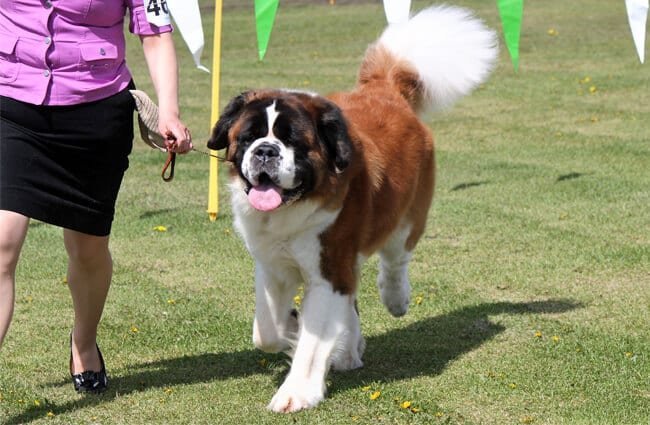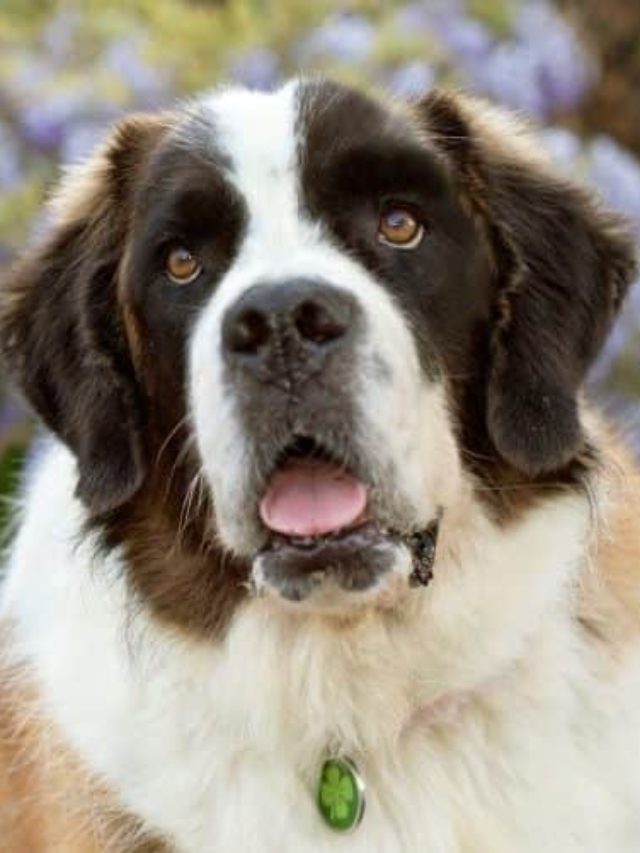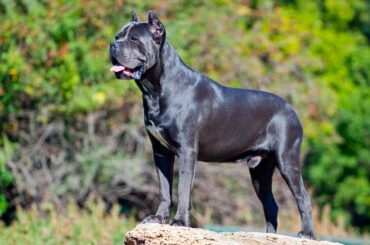Saints are descendants of the Molosser family, which includes Mastiffs, Saint Bernard Dog, and other large breeds. These dogs were discovered on Swiss farms, where they were used to pull carts, guard property and cattle, and warn the farmer of impending danger.
They were most likely produced when Alps-native canines were bred with Mastiff-type dogs who accompanied the Roman army during the reign of Emperor Augustus. By the first century A.d., dogs in Switzerland and the Alps had been gathered together and dubbed Talhund or Bauernhund.
In 1670, farmers in the valley below the Saint Bernard hospice are said to have given the monks some of their dogs to assist them in fending off bandits. The monks began breeding the dogs after discovering that they had a remarkable sense of smell and could assist them in locating lost tourists. The canines’ rescue prowess became legendary a little more than a century later.

Because the hospice was so remote, the monks had a limited supply of dogs to breed with, hence their pups had a particular appearance. However, in 1830, the monks attempted to increase the size of the dogs and give them a more waterproof coat by breeding them with Newfoundlands. They grew in size, but their long hair turned out to be a tragedy. In the snow, it matted and froze.
A series of harsh winters between 1816 and 1818 resulted in an increase in the number of avalanches, killing many of the dogs employed for breeding while performing rescues. The remaining St. Bernards were traversed with Newfoundlands introduced from the Colony of Newfoundland in the 1850s, as well as with other breeds, in an attempt to preserve the breed.
As a result, they lost much of their use as rescue dogs in the snowy climate of the Alps because the long fur they inherited would freeze and weigh them down. On March 15, 1884, the Swiss St. Bernard Club was formed in Basel. In 1884, St. Bernard became the first breed to be registered in the Swiss Stud Book, and the breed criteria were adopted in 1888. Ever since the breed has served as the national dog of Switzerland.
In 1887, the Saint Bernard Club of America was founded. The popularity of the breed grew throughout time, and the Saint became one of the most popular dogs in the United States in the 1960s and 1970s, ranking fourth in American Kennel Club registrations in 1971.
Table of Contents
Saint Bernard Dog Body Characteristics

As shown by his massive head and towering, muscular frame, Saint Bernard Dog belongs to the Mastiff family. It’s a huge dog. The eyes should be brown, but occasionally icy blue, with naturally tight lids and only faintly perceptible haws. The coat can be smooth or rough, with the smooth being close and flat and the rough being thick, flat, and more abundant around the neck and legs. The color is usually a reddish-brown with white highlights or a mahogany brindle with white highlights. The cheeks and ears are frequently shaded in black. The tail is long and thick, and it hangs from the top.
Saint Bernard Dogs are 28 to 30 inches tall at the shoulder and weigh 140 to 180 pounds for males and 120 to 140 pounds for females. There are two coat varieties for Saint Bernards: shorthaired and longhaired. The shorthaired coat is thick and silky. On the thighs, the hair is slightly bushy, and the tail has long, dense hair that gets shorter toward the tip.
Longhaired dogs have a slightly wavy coat that is never frizzy or shaggy. Although the forelegs are feathered, the thighs and tail are bushy. Saint Bernard Dog come in a variety of red and white or white and red color combinations. From brindle patches with white markings to brownish-yellow, the red occurs in a variety of tints.
Saint Bernard Dog Behavior
Saint Bernard Dog is a patient, calm, and friendly creature. He doesn’t need to be hostile toward strangers; his sheer size will deter most people. Saints are warm and friendly. They have a calm, pleasant demeanor and are kind and cautious around youngsters. They enjoy being petted but aren’t as demanding as some other breeds. They’re friendly to almost everyone they encounter, and those who don’t mind a little drool will find them to be wonderful friends. They’re also adaptable; they’re not aggressive, but they’ll bark if there’s a reason to do so, and any threat to their people will trigger their protective instincts. Any would-be assailant or burglar is usually put off by their size.

Saint Bernard Dog Training
To keep them from being too wary or afraid of something unfamiliar or strange, they need to be socialized early and often. It’s critical to start training Saints at a young age, while they’re still easy to handle. They’re intelligent and eager to please, although they can be stubborn at times. Unless they are defending a family member, they should never be hostile.
Saint Bernard Dog, like all dogs, require early socialization and exposure to a variety of people, sights, sounds, and experiences. Socialization is important for your Saint Bernard puppy to develop into a well-rounded dog.
Caring for Saint Bernard Dog
Saint Bernard Dog does not require a lot of physical activity. He’s not a good jogging partner and will wilt in hot weather. During warmer weather, Saints are prone to heat exhaustion and require shade as well as plenty of fresh, refreshing water. A friendly dog who requires moderate activity.
Both kinds shed heavily in the spring and fall, and weekly brushing is required all year to keep loose hair in check. Brushing a longhaired Saint a couple of times a week is probably a good idea.
Saint Bernard Dog – Health
Saint Bernard can have hip and elbow dysplasia, cardiomyopathy, cancers such as osteosarcoma (bone cancer), eye difficulties such as entropion and ectropion, osteochondrosis, hypothyroidism, and stomach torsion, among other inherited health problems. They have an average lifespan of 8 to 10 years.
RECOMMENDED ARTICLES
- 10 Great Dog Breeds for First-Time Owners
- Portuguese Water Dog: Characteristics, Behaviour And Health
- Newfoundland Dogs: Characteristics, Behaviour And Health
- Leonberger Dog – 4 Comprehensive Body Characteristics, Behaviour And Health
- Mastiff Dog Breed – 8 Exclusive Body Characteristics, Behaviour and Health
If you like, please share it. Sharing is usually caring.





